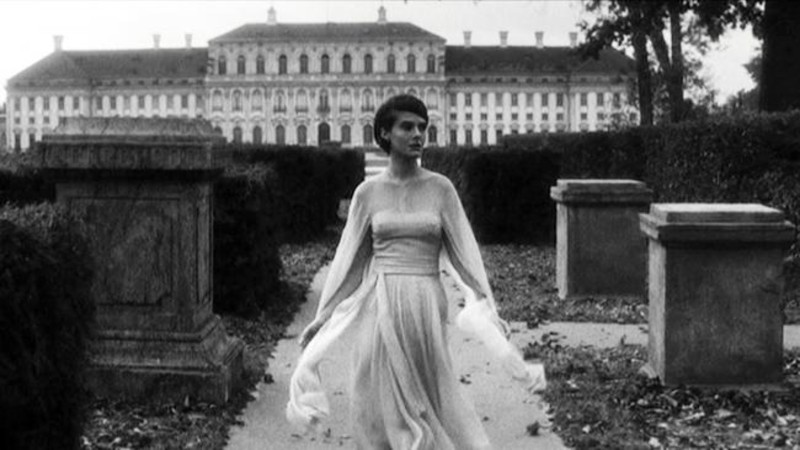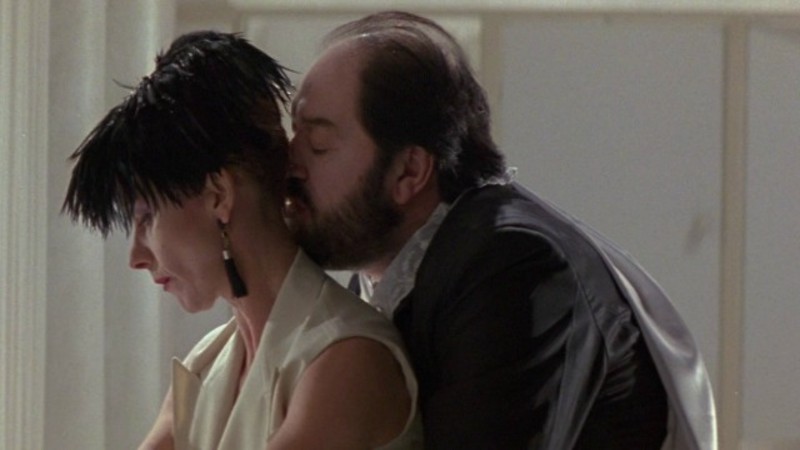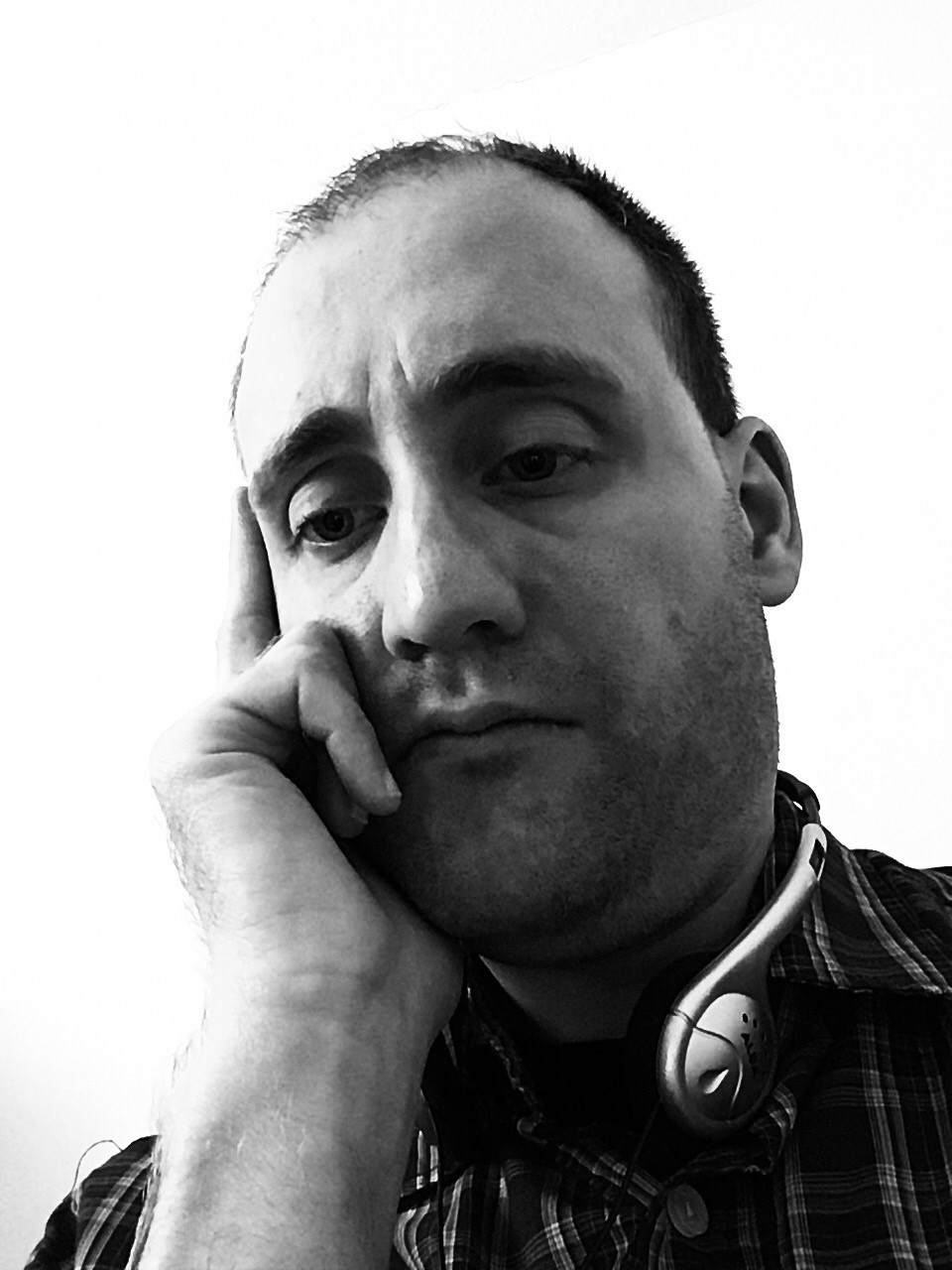




There’s French blood and spirit in the films of Peter Greenaway. In the Brexit era of national rhetoric, of to-do-it-ourselves mentality, and of pumping our chest draped in the colours of the Union Jack, that ironically are the colours of the French Tricolour, this is a seditious statement. That a leading auteur of British cinema has been or is influenced by a French filmmaker is a controversial yet not unfounded suggestion.
In a June 2004 interview with The Telegraph’s John Whitley, Peter Greenaway said of Alain Resnais’ Last Year at Marienbad (1961; pictured below), “It showed me the way… Every film I make is not a direct homage by me to that film but is my attempt to remake it”. So, is there a tangible connection between the British helmer and the late French filmmaker? Greenaway’s acknowledges that not every film is a direct homage. Therefore, the connection between Resnais and Greenaway must embrace distinction as much as similarity. The French filmmaker passed away in 2014.
Speaking about Last Year at Marienbad, Greenaway said, “Even though its origins are in a script by [the novelist] Alain Robbe-Grillet, it’s still far removed from the sort of anecdotal storytelling that makes up 99.9 percent of all cinema. It’s deeply intelligent in the way it organises the picture space, it is satisfying on the intellectual and emotional level, it is superb to look at and it’s always offering me something new, something different”.

.
Say no to narrative
Greenaway casts the impression of an unorthodox and subversive auteur, who has made the arthouse his niche. He has little to no interest in pandering to convention, and to cinema as a narrative art. Trained as a muralist, it’s no surprise that there is an artistic sensibility to his films, in which the aesthetic of image and sound is deliberately organised. Greenaway presents us with stories, but his films are an artistic form or object, not solely a narrative one.
Think about the lush music of his debut feature The Draughtman’s Contract (1982; pictured at the top of this article) – the music becomes your eyes and allows you to see the images that are influenced by art and painting. Then think about the framing of the sequences in The Cook, The Thief, his Wife and her Lover (1989; pictured at the bottom), that again recall painting, a form that relies on image to express the themes and ideas, not text. The dinner table of the thief played by Michael Gambon, his mother and cronies is a vile reimagining of The Last Supper, and the scenes of the wife (Helen Mirren) and her lover (Alan Howard) are framed as though a painting on the canvas. And the director enjoys the cameras flexibility to reposition, expand or shrink the image, with the application of music to communicate the emotion, embracing style similarly to Resnais’ film that does not conceal the presence of the films author.
While the monochrome image of Last Year at Marienbad feels isolated to the colour of these two films, its imagery more filmic, there are similarities. The camera pan in place of the cut to transition between rooms or spaces, the corridor to the toilets, and entering and exiting the dining space in The Cook, the Thief, his Wife and her Lover, recalls the pans down the corridors of the baroque hotel. And the pan up and down the table during a dinner scene in The Draughtman’s Contract recalls the opening pan of Resnais’ characters. Both filmmakers transpose the abruptness of the edit with a fluidity of graceful movement.
All three films have anecdotal titles, and none fully liberate themselves from anecdotal storytelling. The Cook, the Thief, his Wife and her Lover does not reduce an adulterous meeting, the subsequent affair, and the fatal fallout into a series of anecdotes. Although, the rendezvous between wife and lover could be seen as anecdotal, episodes of the story that are essential to the arc Greenaway is constructing. In The Draughtman’s Contract, Mr. Neville (Anthony Higgins), an artist is commissioned by the wife to produce a series of drawings of her absent husband’s rural estate – their contract includes rendezvous for his pleasure. Any such episodic interruptions are also sparse here, although some of the intimate rendezvous and encounters with other characters form anecdotal episodes.
Last Year at Marienbad with its flashbacks and interactions between characters past and present is anecdotal, and so Greenaway’s reading of the film and how it influences his work should be seen in the context of applying and furthering that which he has perceived. The Draughtman’s Contract is closer to Resnais’ film, although The Cook, the Thief, his Wife and her Lover is less so, furthering the characteristics he admired.
There are also differences between Greenaway and Resnais. While there is more of a clarity to the events of The Draughtman’s Contract, similarly to Last Year at Marienbad there is a conflict over narrative. In Resnais’ film the couple disagree over their rendezvous the year before, whether they slept together and agreed to meet one year on. In Greenaway’s film Neville is accused of the murder of Mr Herbert, although it is insinuated that Mrs Herbert and an ensemble of characters are in fact implicit in his demise. A loose reimagining of Resnais’ film, The Cook, the Thief, his Wife & her Lover lacks ambiguity. It’s a drama with a tight three act structure with a clearcut conclusion. An interaction between the sexes however forges a connection with Last Year at Marienbad, although while we see the sexual liaison unfold between wife and lover in Greenaway’s film, it’s unclear whether any sexual interaction transpired between the stranger and the woman in Resnais’ story.

.
A little bit of film history repeating?
If Greenaway’s films are unconventional, wilfully repetitive and disorientating, to what extent is this attributable to Last Year at Marienbad? The approach to anecdotal storytelling goes part way to suggesting that Resnais has been a significant influence, as does the repetitiveness of both The Draughtman’s Contract and The Cook, the Thief, his Wife & her Lover. Mr Neville’s daily routine of drawing the house from chosen vantage points, to his contractually agreed sexual rendezvous, and the recurring dining scenes at the restaurant and sexual rendezvous between the wife and her lover, mirrors the repetition of scenes and dialogue in Resnais’ film. Repetition as an anti-cinematic and anti-dramatic approach enables Greenaway’s filmmaking. while he may have reasonably come to express it autonomously, seeing as he’s attempting to remake Resnais’ film, it would be a strange case of coincidence.
By its nature, Last Year at Marienbad is a disorientating film that leaves us with a cryptic puzzle, but the disorientation of Greenaway’s cinema is not necessarily an abstract replica. If Resnais’ film functions on a dream logic, conveying a dreamy and otherworldliness sense of feeling, then we can compare it to the ethereal feel of the spatial in The Cook, the Thief, his Wife & her Lover. The fluidity of the camera and the suspicious amount of time the wife spends away from the dining hall suggests to us that their time is out of synch with our reality. Greenaway never asserts whether either are played out in an alternative reality, but The Draughtman’s Contract echoes the dream of Last Year at Marienbad, not fully descending into nightmare, while The Cook, the Thief, his Wife & her Lover leans towards the darker form of a nightmare. Again, the ethereal sense of feeling of The Cook, the Thief is suggestive of Resnais’ influence, especially when we consider or contextualise The Draughtman’s Contract as a bridge between the two other films. It however raises the question that has become prominent, of how we separate autonomy and influence.






